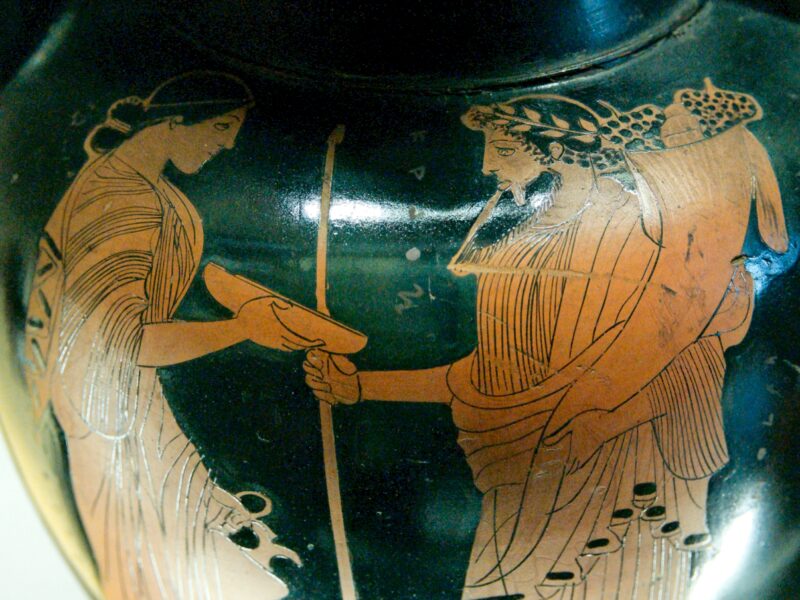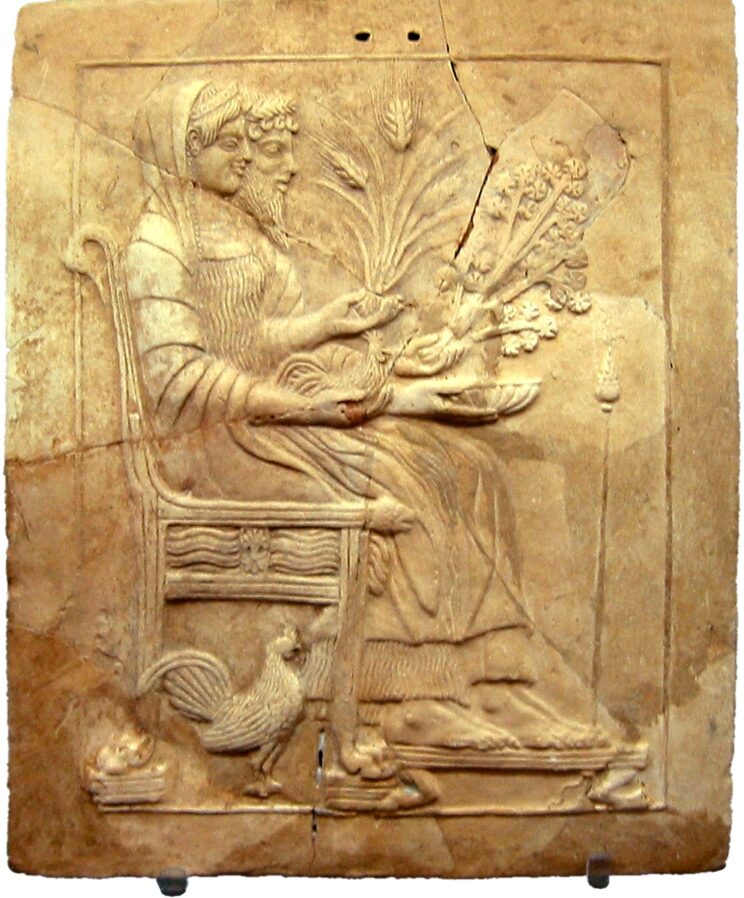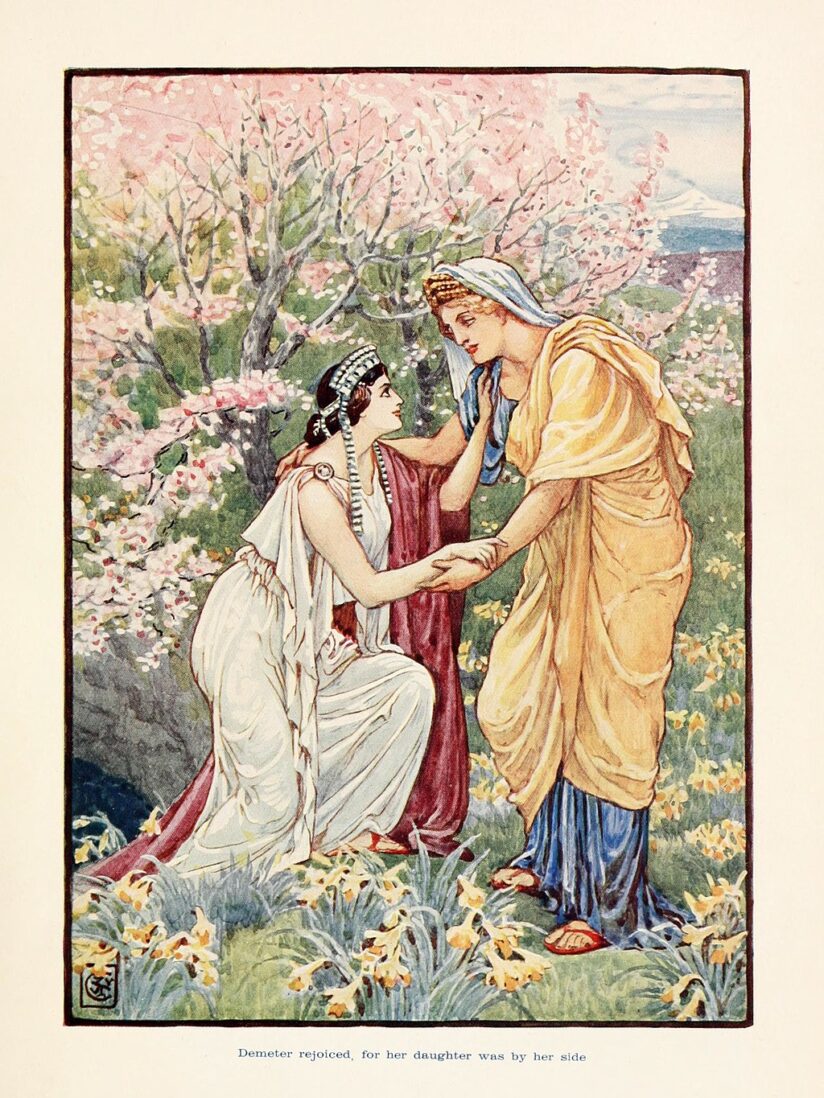
In the pious wheel of time, Persephonē Περσεφόνη, the daughter of Zeus and Demeter represents the gush of spring when seeds sprout from the ground and the earth blooms in abundance. Holding a sheaf of wheat in her hand, she is identified as the spring goddess in Greek mythology. Plato calls her Pherepapha (Φερέπαφα) in his Cratylus because “she is wise and touches that which is in motion”.
Persephone was the only daughter of Demeter, the goddess of the harvest and all the vegetation on earth. At a young age, she was abducted by Hades, who desired her to be his wife.
Hades, the eldest son of the Titans Cronus and Rhea, also the brother of Zeus, Poseidon, Hera, Demeter and Hestia, was the Greek god of the underworld. When the three brothers divided the world between themselves, Zeus received the heavens, Poseidon the sea, and Hades the underworld. In art and literature, Hades is often described as “stern and dignified, rather than a cruel or devil-like god.”
One spring day as Persephone was lightly treading in the meadow, she was enraptured by the lure of a narcissus flower which Gaia has placed there as a favor to Hades. As she kneeled down to smell it, the earth trembled and the ground cracked open. Hades suddenly appearing in a golden chariot, seduced and carried Persephone into the underworld.

When Demeter found out that Zeus had given Hades permission to abduct Persephone and take her as his wife, she became enraged at Zeus. In her bitter grief of losing her only daughter, she cut off the growth of harvests on earth. The once green fields became barren, and the abundance of grains became scarce. To soothe Demeter’s rage, and to bring back fertility on earth, Zeus sent Hermes, a divine messenger to the underworld to return Persephone to her mother. However, having already eaten six pomegranate seeds after her abduction, Persephone was now eternally bound to the underworld, for the seeds of pomegranate had a sacred quality of binding the person to the underworld once eaten. Since Persephone had consumed six pomegranate seeds, she was compelled to spend six months of the year with Hades and the remaining six months she was allowed to spend with her mother on earth.

The time of the year when Persephone could leave the underworld is identified with the beginning of spring. As she re-emerges from beneath the ground to reunite with her mother, the earth starts to bloom, the seeds sprout, and abundance embraces the earth. Her return from the underworld each spring is an allusion to immortality. The seeds buried in the ground only to germinate and sprout in the spring, symbolizes regeneration, and the beginning of a new cycle of life and death.

When Persephone’s time on earth is up and she has to return to the underworld, Demeter’s despair in losing her daughter would once again flare up sending shivers to the earth. All the crops and plants rush into autumn flurry and blankets of early frost flicker the winter ahead.
So goes the cycle of life and death since the ancient Greek when the wheel of time is chimed, churned and turned by the hands of gods residing in Mount Olympus.
Duygu Bruce
You can also read the story of Iris, the Greek goddess and intercessor between deities and humans, and Athena’s sacred tree.







